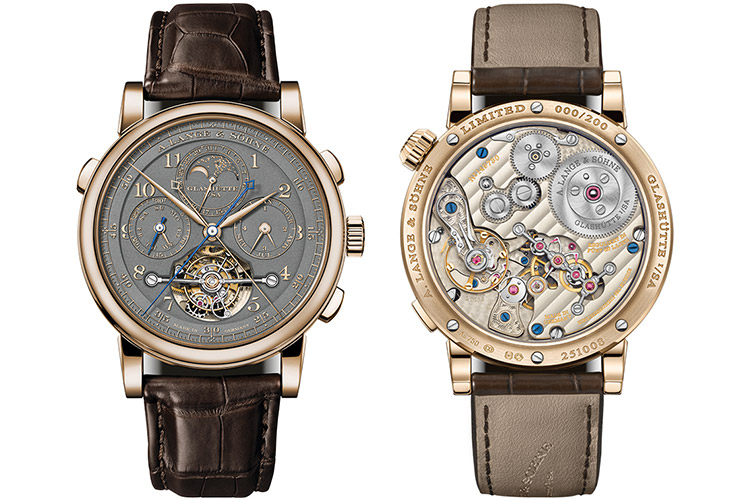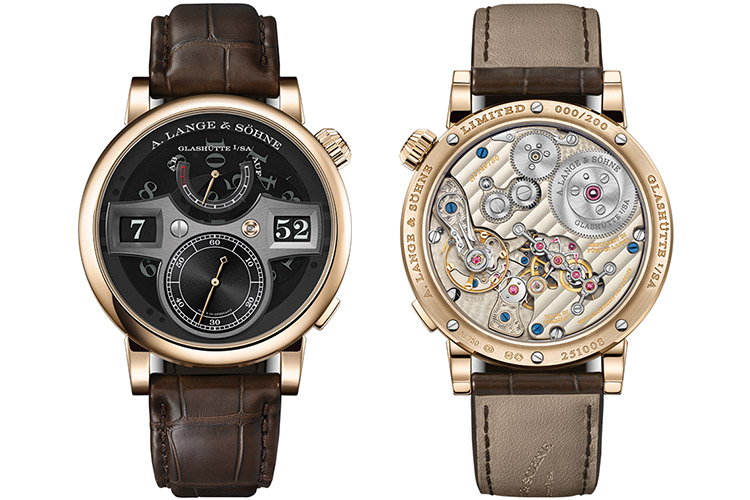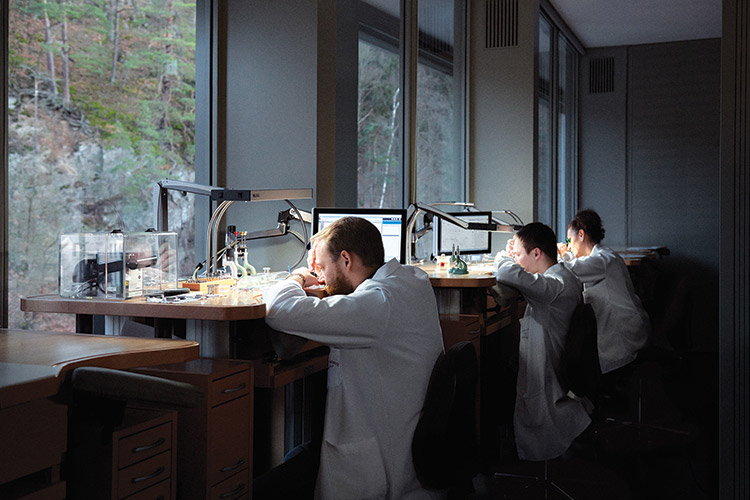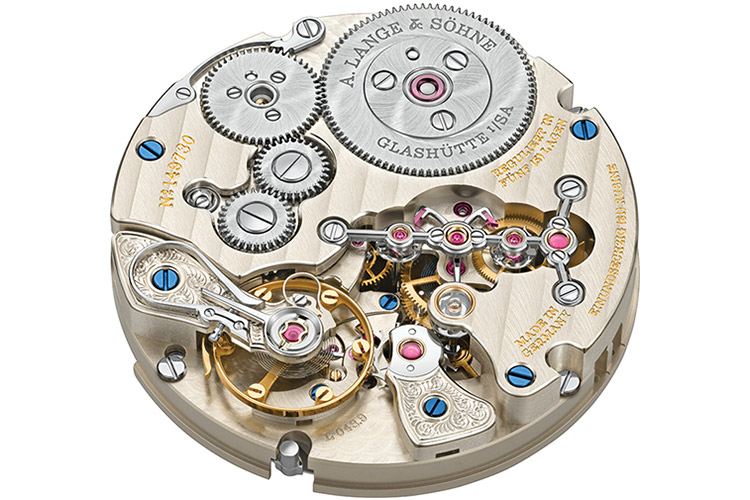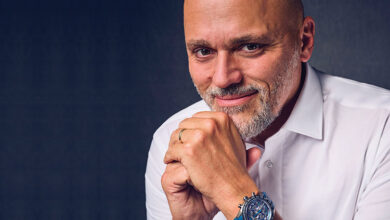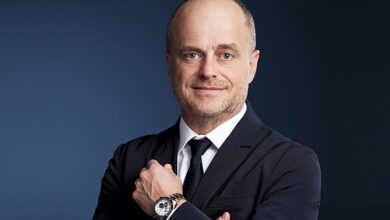
Glashütte watchmaker A. Lange & Söhne has earned a name for its high watchmaking and its outstanding finishings. “Day & Night” magazine sat down with the maison’s CEO, Wilhelm Schmid to talk about its latest launch, the Zeitwerk Honeygold “Lumen”, and the marque’s philosophy of watchmaking…
Let’s start with your latest release, the Zeitwerk Honeygold “Lumen”; the Lumen has become an iconic line by itself, did you foresee such a reception when you first launched it?
I wasn’t there in 2009-10 when we first launched the first Zeitwerk Lumen. A lot of people love skeletonisation as it opens up the movement; we aren’t a big fan of the skeleton because we are always worried about the sun – daylight and UV light going into the movement, which happens when you open up the movement. The oil may oxidise quicker, and it is also against our philosophy of robustness – because skeletonising makes everything weaker. The closest to opening the movement without doing this, which is against the Lange approach, is the Lumen technology – the setting of certain crystals that allow a certain amount of light to get in and charge the luminous material.
That was the very basic idea that turned out to give a very traditional watch a very modern edge; and it was the result of a lot of hard work. Over time, our clients just love it and it became what it is today. Was it planned from the beginning? I would be lying if I said it was. By the last 3-4 iterations, we were sure of how it worked and we planned accordingly. Not every watch will work with it, because it has to be something that needs illumination, such as an outsize date. It is not anything that would work with an 1815 as there are not that many elements in it. There is as always with us a clear structure and a clear idea behind it, and that is why I think it is so vaunted.
Given the fact that you already knew that the watch would be sold out immediately, why did you put in a new movement when you could have just launched the Lumen version of the Zeitwerk Honeygold and then later launched the new movement in another watch?
That is very clearly not us; if we had come up with a Zeitwerk Lumen with just a different case material, our clients would have been very disappointed with us. That would be a very commercial move and we don’t want that. That is why, yes, we launched the Lumen, but it is very different from the watch we launched in 2009.
When watch collectors are asked their opinion about a Lange watch, they just say “It is a Lange”, and that says it all for them; your comments?
Some people love what we do and other people love other watches, other design languages, other executions, and I think that is brilliant as that is exactly what we want. We only produce 5,500 watches a year. By definition, we cannot produce watches that everybody wants.
Isn’t 5,500 watches a lot considering the amount of craftsmanship, detailing, and finishing that goes into every watch?
That is why we have more than 500 people working in our Manufacture; it is the result of 20 years of training watchmakers and running a watchmakers’ school. That didn’t come overnight. It is hard work over a long period of time by many people; otherwise, it wouldn’t be doable.
Most brands would not have cared about upgrading the movement, as the previous movement itself was a great movement. Lange went way beyond just upgrading the movement, you changed so many things as well?
We had to; if we do something, we want to do it properly, in the German Glashütte way, which sometimes is a little stressful because we start somewhere, and on the way, it becomes “Let’s change this” and then it is “That also”, “Let’s tackle this one” and so on until you end up with something a lot more than you originally thought you would do. That is why I love my team and they are always good at surprising even me, because they will always go the extra mile and what you see here is the result of the extra mile. It is the doubling of the power reserve, which is not an easy task, on a constant force movement where you need to manage huge energy in a wristwatch over an extended period of time. It is not a simple task where you put a smaller spring or a bigger one because it does not work that way.
Lange has never followed any trend in watchmaking; you have always done things your way, at your own pace, and released a watch only when it is ready. What do you think of this strategy?
Look, the way we do things is not perfect to follow trends and therefore we do not follow trends. We believe and, again, it is the nature of our business, that if you can only produce 5,500 watches, you don’t want to follow trends. If you want to produce watches that will always remain relevant from the design perspective, you don’t want to follow trends because trends come and go, and these watches are there to stay.
We now have six different watch families; this is one luxury we never had before and we are building up on that. We do really have such different design families that we can express everything – from the very traditional to very contemporary but always in line with our Lange standards. That is our benchmark – not trends, not the market, not cultures or nationalities. This is what guides us through these times.
How is that Lange has been able to perform very well, even in such trying market conditions as during the pandemic?
We are quite fully vertically integrated, so, in the worst case, if a supplier cannot supply, we do it ourselves. A good example is the dial of the Tourbograph “Pour le Merite” that we launched last year. The dial supplier shut down and we decided that we would do it ourselves. We have the capacity and the capability to basically do everything in-house if needed.
How did you manage to do that?
The watch was launched in October 2020, and that meant we needed the dials at the very latest by June, and in March, Switzerland started to shut down. There was no chance for us to have all that we needed by that time, and that is when we quickly decided to do everything by ourselves. Again, it is because we had the capacity and the capability; if you don’t have either or, that is not a solution for you. It was difficult for us too, but in the worst-case scenario, we can do it ourselves.
